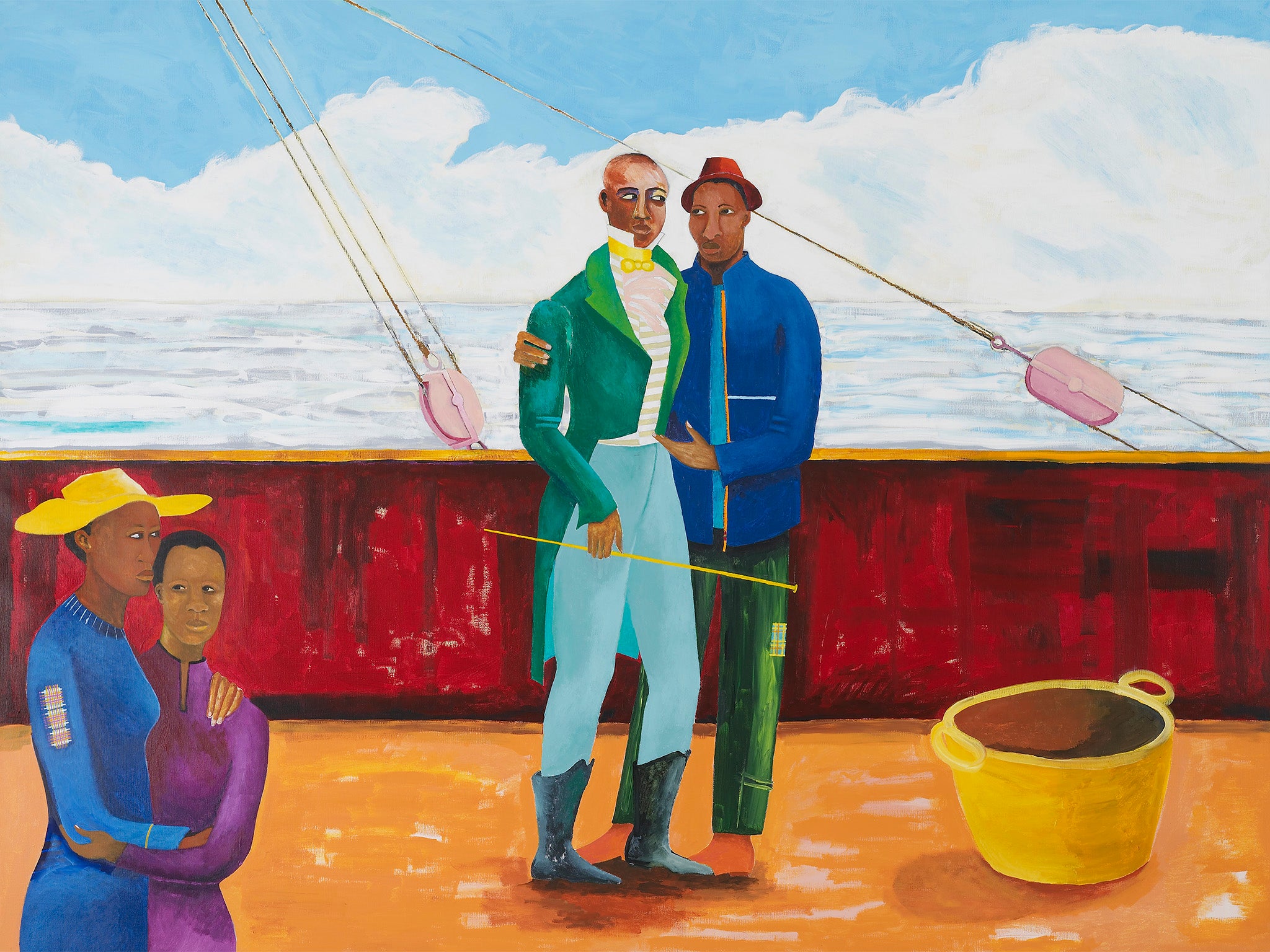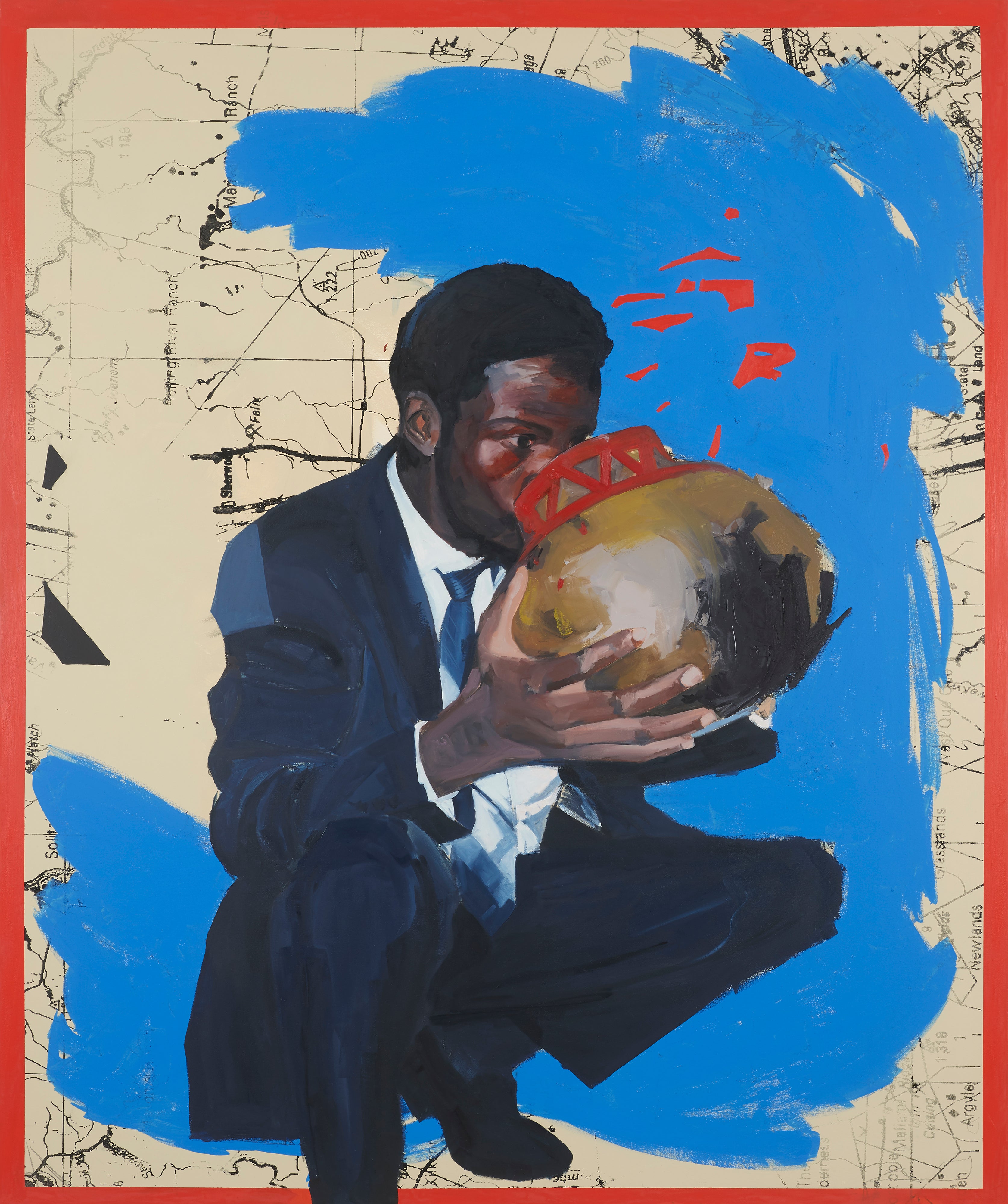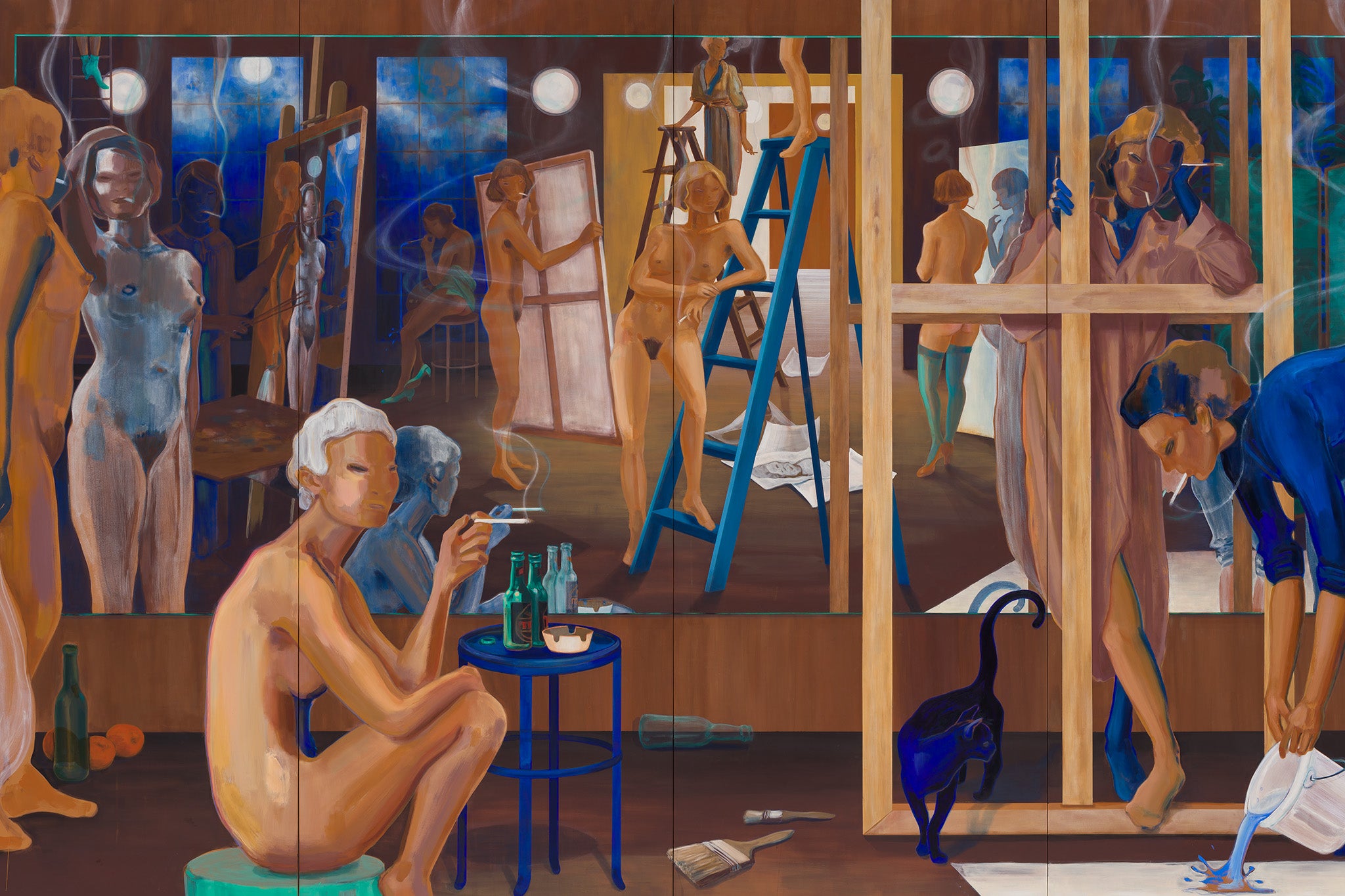Mixing It Up: Painting Today: A big, punchy, entertaining show with an unstoppably upbeat vibe
For all its feeling of freshness and youthful exuberance (evident even when the artists are in their fifties), this art isn’t coming completely out of the blue

Our cultural institutions may be facing desperate choices and compromises in these pandemic-straitened times, but out of adversity come surprising pleasures and revelations. The Hayward’s long planned and costly autumn blockbuster, on international sound art, has been shelved in favour of this survey of painting in Britain today. And there’s a compelling immediacy, and a pleasing make-do-and-mend feel, in the idea of focusing on what’s happening right now, just beyond the gallery walls (nearly all the artists are London-based), in a medium that is relatively low cost, and which for all the attractions of conceptual art, video and performance, is still the one favoured by a large majority of artists across the country.
This is a survey very much in the spirit of the times: more than half the 31 artists are women, and over a third were born outside the UK. While some will inevitably protest about fashionable “wokeness”, it seems more than plausible that this demographic represents what’s most interesting in current British painting. There’s a wide range of ages, from early twenties to late sixties, cultural backgrounds – Zimbabwean, Chinese, Iraqi and Trinidadian to name but a few – and prior achievement, from major figures such as Peter Doig and Hurvin Anderson, to painters fresh out of art school.
If that suggests we’re in for a bewildering diversity of approaches, the first impression looking across the introductory gallery and into the open-plan upper floors is of a disconcerting unanimity of tone and look, as though we’re looking at the work of a single movement or school. Everything’s large scale, figurative, boldly colourful, drawn from a wide range of visual sources – virtually nothing is painted from life – and highly attuned to the political and cultural resonances not only of its imagery, but of the styles it adopts.
It’s not that it all looks the same: on the surface, South African-born Lisa Brice’s slick take on the male gaze, 2017 Turner Prize winner Lubaina Himid’s faux naïve modern history paintings, and Zambian-born Jonathan Wateridge’s polished photo-realism have little in common. Yet they’re united by an underlying feel and purpose, as though visual style, or indeed the very appearance of the painting isn’t personal or intrinsic to the artist, but a consciously adopted pose that can be changed to suit the artist’s purposes, whether that’s repurposing the male canon – in Brice’s case – or addressing western notions of “primitivism” –in Himid’s.
If it’s not all brilliant – I couldn’t get much out of Sophie von Hellermann’s wafty dream paintings – there’s a lot of strong painting here. Brice’s Smoke and Mirrors is an illusionistic tour de force, a tableau of life-size naked female figures, all painting each other, that put me in mind of Ingres’s 19th-century neo-classical soft porn reworked by fetishistic pop painter Allen Jones – but with a feminist twist. Iraqi-born Mohammed Sami’s sinister, surreal meditations on his country’s recent history are a real find, while Kudzanai-Violet Hwami’s mix of abstraction and figuration, personal photos and historical imagery bring to mind leading African-American artists such as Kerry James Marshall and Njideka Akunyili Crosby, though it’s pulled together with a gusto and panache that suggest the 27-year-old – who has just finished her MA at Oxford’s Ruskin College – could yet outstrip both these role models.
For all its feeling of freshness and youthful exuberance (evident even when the artists are in their fifties), this art isn’t coming completely out of the blue. There’s a strong sense of linking back to key painters of recent decades; it feels at times as though everyone’s been force-fed a diet of Peter Doig’s post-punk symbolism, Kerry James Marshall’s reverse appropriation of the white western canon and Sigmar Polke’s politically-charged synthesising of unlikely materials; and in a few instances that is, I’m sure, actually the case.

When we are shown some actual Doigs, they stand out not so much for their quality, as for a feeling of longer and deeper reflection and evolution, a quality shared with three beautifully measured works by Hurvin Anderson. Indeed, in this company Doig, 62, and Anderson, 56, feel like old masters, despite being younger than some of the other artists.
There’s a sudden incursion of gutsy abstraction in the upper gallery with Colombian-born but Hackney-raised Oscar Murillo’s paintbrush furiously zigzagging across truly monumentally scaled canvases, and the complex organic forms of Jade Fadojutimi, another painter of African origin in her twenties, who’s strongly tipped as a name to watch. Yet as with most of the work here, all isn’t quite what it seems. Fadojutimi’s paintings soon reveal themselves as visionary quasi-landscapes, while Murillo’s paintings – which sell for astonishing prices – don’t quite convince as fully abstract in the Pollock and Rothko sense. I was reminded rather of a gritty post-modern take on Monet’s immersive late landscapes. It’s as though traditional distinctions between abstract and figurative art no longer have real meaning.

Yet it’s only with Venezuelan-born Alvaro Barrington’s paintings set into concrete boxes – which appear a good three quarters of the way round the show – that we encounter work that feels genuinely innovative. Stop Drop positions its collaged portrait of late rapper DMX into a box of near architectural proportions, with his lyrics smeared over it into wet concrete: the image is positioned below eye level, so we have to lean down, putting ourselves almost physically into the work to fully see it.
Despite the prevailing vibe of restless Google-searching omnivorousness, the ambiguously abstract paintings of Vivien Zhang – who was born in Beijing in 1990 – are the only works that feel overtly digital in character, despite being entirely executed in paint. Her complex layering of meticulously repeated gestural brushstrokes, graffiti-like stencilling, metallic airbrushing and photo-realist elements take the viewer into slightly eerie, quasi-robotic territory I haven’t quite encountered before.

Hayward director Ralph Rugoff knows how to put together a big, punchy, entertaining exhibition. Mixing It Up has great pace and energy and an unstoppably upbeat vibe. You’d never guess that immense, world-changing and essentially tragic events were going on while the bulk of this work was being created. There are occasional nods towards Covid restrictions and parallel events such as Black Lives Matter, but these are so subtle they’re barely noticeable. That might feel like a missed opportunity, but at least we’re spared strained attempts at “relevance”: think of all those rainbow-themed, NHS-thanking works served up during the first lockdown, which the artists concerned may live to regret. On this showing, Britain’s artists got through this period of immense collective and individual uncertainty – which still feels very much ongoing – in the way artists always have responded to difficult times, by getting into the studio and keeping that flame of individual inspiration burning. Art that really grapples with the implications of the pandemic period is likely still to come.
Mixing It Up is at the Hayward Gallery, Southbank Centre, London, from 9 September until 12 December
Join our commenting forum
Join thought-provoking conversations, follow other Independent readers and see their replies
Comments


Bookmark popover
Removed from bookmarks